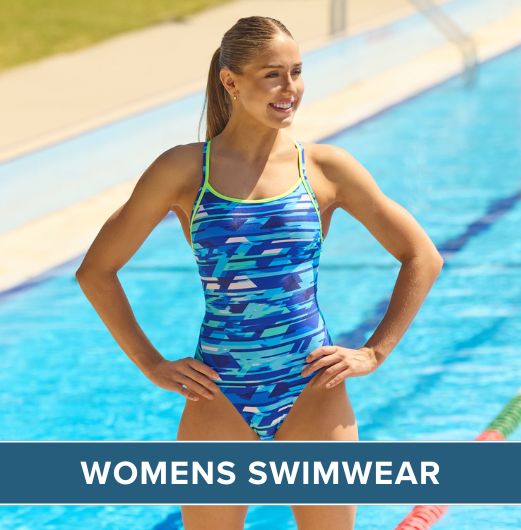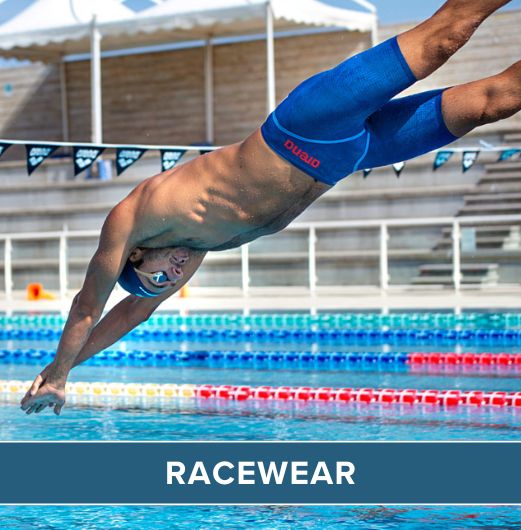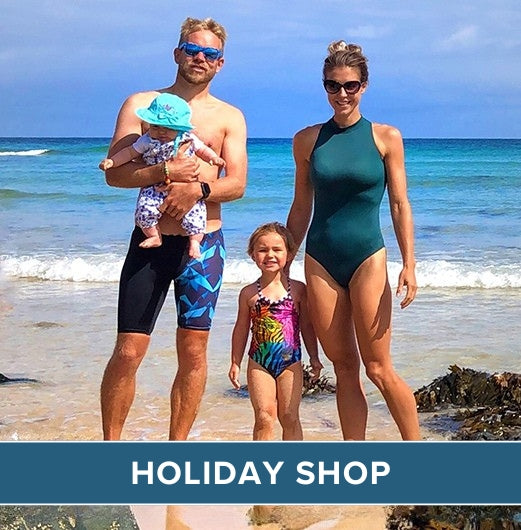Choosing Swimming Caps

Firstly, let’s clear up a big misconception with swim caps: they are not designed to keep your hair dry! I know this may come as a shock but no swim cap is guaranteed to keep hair dry. Although some caps will do quite a good job, this is not their purpose. To try to keep your hair dry as much as possible you can either wear 2 caps (maybe a Lycra cap and a silicone cap over the top) or use a silicone cap which gives a tight fit and should keep most of the water out.
The reasons for wearing a swimming cap are:
- To make you more streamlined in the water: If you swim competitively, speed is very important and your hair will cause water drag, which slows you down. A swimming cap will reduce water drag and keep your hair out of your face so that you can see as you swim.
- To protect your hair from the damaging effects of chlorine: Whilst your hair will still get wet, caps will prevent your hair from becoming saturated with the chlorinated water in the pool which can damage your hair.
- Hygiene: People who swim without a cap lose hair in the pool and this ends up floating in the water and clogging up the filters.
- Warmth: If you swim in open water a swim cap will help to keep you warm in cold water.
TYPES OF SWIM CAPS
FITTING A SWIM CAP
Putting a swim cap on can be tricky business, especially if you have long hair! The best way to do this is to hold the cap by the sides and bring your head forwards and start by pulling the cap over your forehead then carry on working it down.
If you have long hair you should leave your hair out to the back, pull the cap on half way and then twist up the rest and try to put it in the cap as evenly as possible so that the cap still has a good seal.
Swimmers that put their hair up in buns or pony tails create a point in their cap which may let water in because it is not sealed correctly around the face.
PROTECTING YOUR HAIR AND CAP
After swimming you will find that you have wet spots on your hair unless you have found a swim cap which fits you perfectly and has a great seal. If you want to avoid chlorine entering your cap you could wet your hair in the shower first before you put your swim cap on. This will help prevent chlorine from seeping under your cap by filling and sealing the hair shafts.
Some people condition their hair before putting a swim cap on but this can cause the cap to pop off. However, if you have goggles on over your cap this should prevent it from rising up. If you do brush conditioner through your hair first you should make sure you have a cap with a good seal so that conditioner doesn’t get into the pool.
If you like swimming without a cap we would suggest that you rinse your hair in the shower before you swim and rinse well after with shampoo and use a conditioner to help repair any damage from chlorine. If you swim regularly then we advise that you use a deep conditioning treatment once a week as well.
To prolong the life of your swimming cap and keep it in good condition you should rinse it in cold water and then dry it after use. Do not leave your swim cap exposed to sunlight for long periods and avoid contact with sharp objects such as hair clips and pins as these could puncture it.
FREQUENTLY ASKED QUESTIONS
Q. Are any swim caps totally waterproof?
A. No, unfortunately not. Swim caps are not designed to keep your hair dry but to reduce drag and for hygiene reasons. However, silicone caps or wearing two caps together with a silicone one on top, does create quite a good seal to prevent a lot of water seeping in. If you are swimming without putting your head in the water then a swim cap will protect your hair from splashes and will probably stay dry but if you swim with your head below the water line, water will seep into the cap because there is not a watertight seal.
Q. Do swim caps come in different sizes?
A. Most swim caps are one size but some will come in small, medium, large etc; normally racing caps or open water neoprene caps. Many swim cap manufacturers design caps for adults or children with the children’s caps being smaller.
Q. I have long hair and a large head. Will a normal swim cap fit?
A. There are long hair caps available from suppliers like Speedo and Zoggs which give a roomier fit to accommodate long hair. Bubble caps are also a good choice for longer hair and larger heads, although these do create warmth, so if you are a performance swimmer they may be too warm for you.
Q. Do swim caps cover your ears and prevent water getting into the ear?
A. The Aqua Glide Swim Cap from Aqua Sphere has ear pockets to give a fixed fit over your ears and gives a good seal to prevent most water getting under the cap, however, it is not guaranteed to prevent any water seeping in. Bubble caps are also good for covering the ears, but because swim caps do not give a watertight seal, water may still get into your ears. You can use products such as Earol Swim
 Free Tracked UK Delivery
Free Tracked UK Delivery Hassle Free Returns
Hassle Free Returns Next Working Day OPTION
Next Working Day OPTION Found It Cheaper?
Found It Cheaper?

















